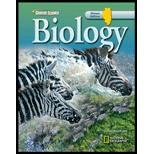
Concept explainers
To write:
About the relationship between sternum and air sac
Introduction:
Birds are different from other vertebrates due to the presence of two characteristics, that is the presence of feathers, and they can fly. Birds belong to class Aves and they can range in size from tiny hummingbirds to large flightless ostriches. Birds are found in forests, deserts, prairies, mountains, and on all seas. The adaptations of birds include they being able to produce their own body heat internally or endothermy, feathers, and light-weight bones.
Explanation of Solution
Fusion of bones in the skeleton of a bird makes the skeleton sturdier, another adaptation for flight. Large breast muscles, which can make up 30 percent of a bird’s total weight, provide the power for flight. These muscles connect the wing to the breastbone, called the sternum. The sternum is large and has a keel to which the muscles attach. The expansion of sternum also helps in the respiration process. The birds' respiratory systems have several peculiar properties related to flight habits. As well as exchanging gas, the respiratory system streamlines the body and alters its distribution of mass. Air movements can be coordinated with wing movements, and flying birds appear to hyperventilate.
When a bird inhales, oxygenated air moves through the trachea into posterior air sacs. Carbon dioxide containing air already within the respiratory system is drawn out of the lungs, where gas exchange occurs, and into the anterior air sacs. When a bird exhales, the deoxygenated air in the anterior air sacs is expelled from the respiratory system and oxygenated air from the posterior air sacs is sent to the lungs. The trachea generally seems to have the same length as the neck of the bird but some birds, like the cranes, have an exceptionally long neck and their windpipe that coils within a sternum extension known as a keel.
Sternum connects the flight muscles.The air sacs allow birds to extract considerably more oxygen from air in each breath than other organisms can.
Chapter 29 Solutions
Biology Illinois Edition (Glencoe Science)
Additional Science Textbook Solutions
Human Biology: Concepts and Current Issues
Genetic Analysis: An Integrated Approach (3rd Edition)
Campbell Essential Biology (6th Edition) - standalone book
Human Anatomy & Physiology (2nd Edition)
Anatomy & Physiology
Microbiology with Diseases by Body System (4th Edition)
 Human Anatomy & Physiology (11th Edition)BiologyISBN:9780134580999Author:Elaine N. Marieb, Katja N. HoehnPublisher:PEARSON
Human Anatomy & Physiology (11th Edition)BiologyISBN:9780134580999Author:Elaine N. Marieb, Katja N. HoehnPublisher:PEARSON Biology 2eBiologyISBN:9781947172517Author:Matthew Douglas, Jung Choi, Mary Ann ClarkPublisher:OpenStax
Biology 2eBiologyISBN:9781947172517Author:Matthew Douglas, Jung Choi, Mary Ann ClarkPublisher:OpenStax Anatomy & PhysiologyBiologyISBN:9781259398629Author:McKinley, Michael P., O'loughlin, Valerie Dean, Bidle, Theresa StouterPublisher:Mcgraw Hill Education,
Anatomy & PhysiologyBiologyISBN:9781259398629Author:McKinley, Michael P., O'loughlin, Valerie Dean, Bidle, Theresa StouterPublisher:Mcgraw Hill Education, Molecular Biology of the Cell (Sixth Edition)BiologyISBN:9780815344322Author:Bruce Alberts, Alexander D. Johnson, Julian Lewis, David Morgan, Martin Raff, Keith Roberts, Peter WalterPublisher:W. W. Norton & Company
Molecular Biology of the Cell (Sixth Edition)BiologyISBN:9780815344322Author:Bruce Alberts, Alexander D. Johnson, Julian Lewis, David Morgan, Martin Raff, Keith Roberts, Peter WalterPublisher:W. W. Norton & Company Laboratory Manual For Human Anatomy & PhysiologyBiologyISBN:9781260159363Author:Martin, Terry R., Prentice-craver, CynthiaPublisher:McGraw-Hill Publishing Co.
Laboratory Manual For Human Anatomy & PhysiologyBiologyISBN:9781260159363Author:Martin, Terry R., Prentice-craver, CynthiaPublisher:McGraw-Hill Publishing Co. Inquiry Into Life (16th Edition)BiologyISBN:9781260231700Author:Sylvia S. Mader, Michael WindelspechtPublisher:McGraw Hill Education
Inquiry Into Life (16th Edition)BiologyISBN:9781260231700Author:Sylvia S. Mader, Michael WindelspechtPublisher:McGraw Hill Education





